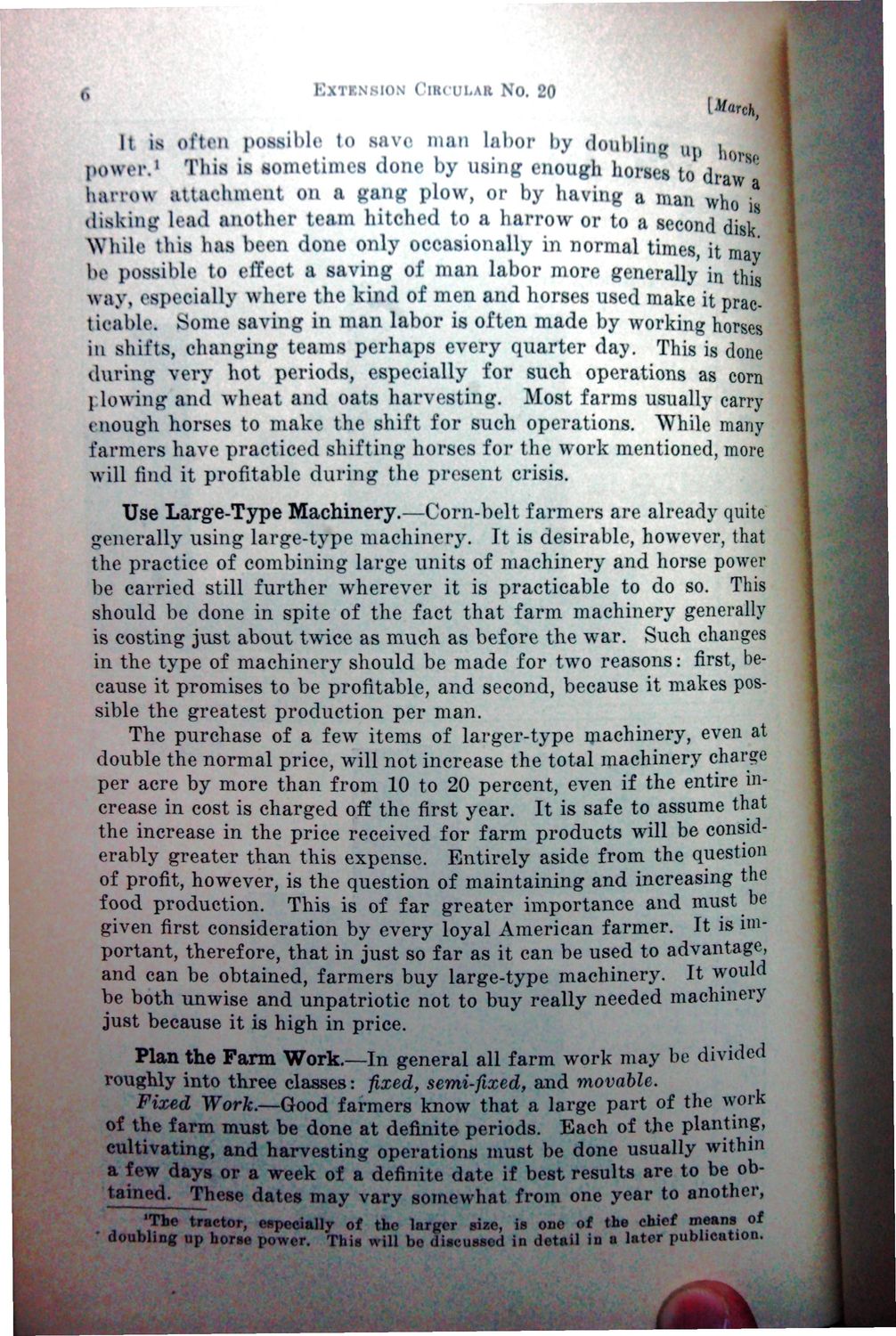| |
| |
Caption: War Publications - WWI Compilation 1923 - Article 28
This is a reduced-resolution page image for fast online browsing.

EXTRACTED TEXT FROM PAGE:
o EXTENSION CIKCULAR NO. 20 ( It is oi'trn possible to savo man labor by douUii,,, „ 1 power. This is sometimes done by using enough horses to'd **** W hanow attachment ou a gang plow, or by having a man J ? * ler ten in hitched to a harrow or to a second V h ormal 1 B possible to effect a saving of man labor more generally in this way, especially where the kind of men and horses used make it practicable. Some saving in man labor is often made by working horses in shifts, changing teams perhaps every quarter day. This is done during very hot periods, especially for such operations as corn plowing and wheat and oats harvesting. Most farms usually carry enough horses to make the shift for such operations. While many farmers have practiced shifting horses for the work mentioned, more will find it profitable during the present crisis. Use Large-Type Machinery.—Corn-belt farmers are already quite generally using large-type machinery. It is desirable, however, that the practice of combining large units of machinery and horse power be carried still further wherever it is practicable to do so. This should be done in spite of the fact that farm machinery generally is costing just about twice as much as before the war. Such changes in the type of machinery should be made for two reasons: first, because it promises to be profitable, and second, because it makes possible the greatest production per man. The purchase of a few items of larger-type machinery, even at double the normal price, will not increase the total machinery charge per acre by more than from 10 to 20 percent, even if the entire increase in cost is charged off the first year. It is safe to assume that the increase in the price received for farm products will be considerably greater than this expense. Entirely aside from the question of profit, however, is the question of maintaining and increasing the food production. This is of far greater importance and must be given first consideration by every loyal American farmer. It is important, therefore, that in just so far as it can be used to advantage, and can be obtained, farmers buy large-type machinery. It would unwise just because it is high in price. # * Farm Work.—In general all farm work may be divided ito three classes: fixed, semi-fixed, and Work.—Good farmers know that a lai of the farm must be done at definite periods. Each of the planting, cultivating, and harvesting operations must be done usually within a few days or a week of a definite date if best results are to be obtained. These dates may vary somewhat from one year to another, The tractor, especially chief
| |